Monumental mistakes? The Statue and Its Discontents
Lecture and panel discussion with Jeanette Kohl and Malcolm Baker, Universität Hamburg, June 8, 2023.
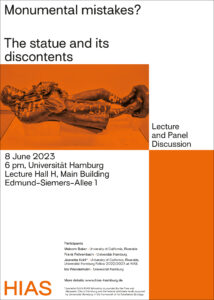 For those concerned with the history of sculpture Robert Musil’s remark that “There is nothing in this world as invisible as a monument” has, alas, always rung very true.
For those concerned with the history of sculpture Robert Musil’s remark that “There is nothing in this world as invisible as a monument” has, alas, always rung very true.
But suddenly over the past three years, everyone is talking about statues. Except they are not. Instead, they are talking about the subjects these statues represent and the culpability of these historical figures for involvement in the slave trade and other crimes of various colonial pasts.
But in this talk four art historians will focus on an aspect of the current debate about statues that has received much less attention. This is the question about how statues work as representations and the roles played by the conventions and visual rhetoric they employ. How might the terms of the debate shift if more attention was paid to the aesthetics of the statue? Is there an opportunity to think about the aesthetics and politics of the monument together?
Participants
- Malcolm Baker, Art Historian, University of California, Riverside
- Frank Fehrenbach, Art Historian, Universität Hamburg
- Jeanette Kohl, Art Historian, University of California, Riverside
- Iris Wenderholm, Art Historian, Universität Hamburg
Universität Hamburg
Lecture Hall H, Main Building
Edmund-Siemers-Allee 1

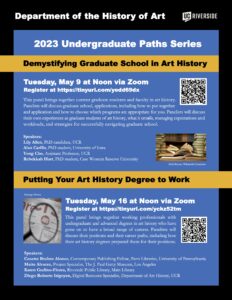 Demystifying Graduate School in Art History
Demystifying Graduate School in Art History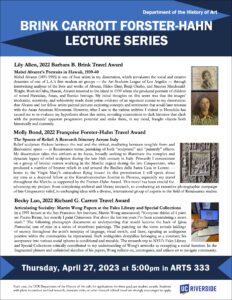
 The lecture is dedicated to an attempt at a “phenomenology” of female bust portraits of the Quattrocento. The focus is on the enigmatic bust of an unknown woman by Francesco Laurana in the Viennese Kunstkammer, which is characterized by its unusual polychrome. In the context of a comparative object analysis and against the cultural-historical background of a Petrarchan topic, the question of how this and other female busts ‘communicate’ with the viewer and what significance their fragmentary object character has will be pursued. Although not primarily motivated by the art-historical “passion for identifying” (Didi-Huberman), the considerations ultimately lead to a proposed new identification.
The lecture is dedicated to an attempt at a “phenomenology” of female bust portraits of the Quattrocento. The focus is on the enigmatic bust of an unknown woman by Francesco Laurana in the Viennese Kunstkammer, which is characterized by its unusual polychrome. In the context of a comparative object analysis and against the cultural-historical background of a Petrarchan topic, the question of how this and other female busts ‘communicate’ with the viewer and what significance their fragmentary object character has will be pursued. Although not primarily motivated by the art-historical “passion for identifying” (Didi-Huberman), the considerations ultimately lead to a proposed new identification.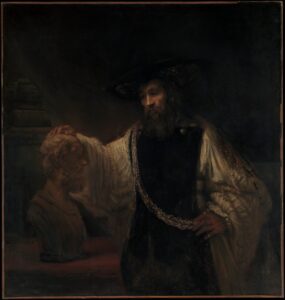
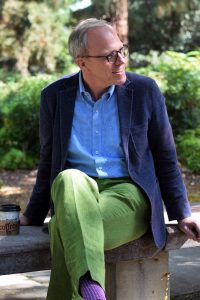 At Durham, Professor Endres will work on his current book project on “Style” as an interdisciplinary category of the study of texts, images and music. As part of his project, he will be in close collaboration with Professor Jonathan Long from Durham’s School of Modern Languages & Cultures. Professor Long is also the co-director of the Center for Visual Arts and Culture at Durham. The collaboration is based on their mutual research interest in German Literature, literary theory, and the study of visual culture in relation to literary artefacts.
At Durham, Professor Endres will work on his current book project on “Style” as an interdisciplinary category of the study of texts, images and music. As part of his project, he will be in close collaboration with Professor Jonathan Long from Durham’s School of Modern Languages & Cultures. Professor Long is also the co-director of the Center for Visual Arts and Culture at Durham. The collaboration is based on their mutual research interest in German Literature, literary theory, and the study of visual culture in relation to literary artefacts.